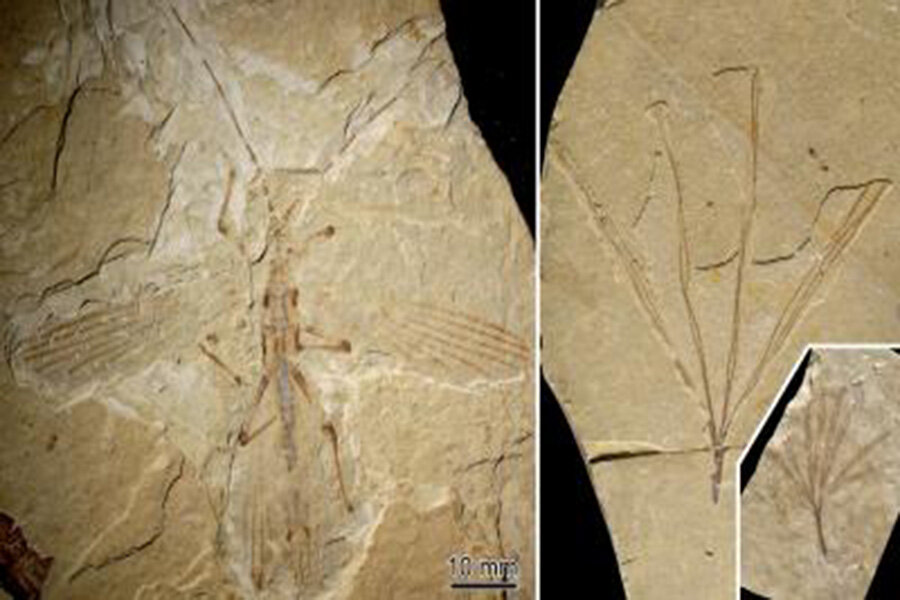Paleontologists spot stick insect fossil camouflaging itself as a stick fossil
Loading...
Scientists have discovered another fossil gem from China's famed Jehol biota: a stick insect species that co-existed with the dinosaurs, nearly 126 million years ago.
Known for their remarkable mimicking capabilities, stick insects camouflage themselves to resemble a stick, leaf, or twig.
The three ancient specimens – one female and two males – may also have mimicked plant leaves for defense, say researchers who published their findings in a paper titled " Under Cover at Pre-Angiosperm Times: A Cloaked Phasmatodean Insect from the Early Cretaceous Jehol Biota" in journal PLOS ONE.
"Positioned at rest, the wings, and their straight and parallel dark lines occurring along the whole forewings and hind wing apices, must have produced a tongue-like shape covered with multiple, longitudinal, continuous lines, concealing the abdomen," says the paper.
These adaptive features helped the insects to conceal themselves within the similar tongue-shaped leaves or foliage of Membranifolia admirabilis, a relative of the ginkgo plant found in the area.
"The leaf-shaped plant organ from the contemporaneous ‘gymnosperm’ Membranifolia admirabilis was used as model for crypsis," say researchers.
Concealment in this case was probably used to escape small insect-eating birds and mammals that were thought to exist in the same biota.
"We know from the same locality where the stick insect was discovered that there are a bunch of predators," study co-author Olivier Béthoux, a paleontologist at the Center of Paleobiodiversity and Paleoenvironment Research (CR2P) at the National Museum of Natural History in Paris, as reported by the Huffington Post. "You want to avoid being eaten."
Named Cretophasmomima melanogramma to refer to the coloration and patterns on its wings, this new species represents the oldest known fossil remains of stick insect. The female specimen found was about 2.2 inches long and the male specimens were slightly smaller (about 1.8 to 2 inches long). The world's longest insect, or Chan's Megastick, is a 22.3 inches long Malaysian variety of stick insect.
"Cretophasmomima melanogramma is one of the grand-cousins of today's stick and leaf insects," Dr. Béthoux told Reuters.
The ancient stick insects lacked certain features found in the more recent forms, such as a curved part of the fore legs for hiding the head, say researchers.








